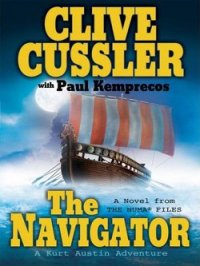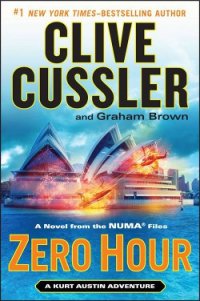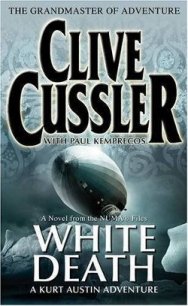Inca Gold - Cussler Clive (читаем полную версию книг бесплатно txt) 📗
After Perlmutter finished reading the journal, he leaned back in his swivel chair, removed his glasses and rubbed his eyes. Any doubts he might have had in the back of his mind about the authenticity of the journal had quickly evaporated. The writing on the parchment showed strong, bold strokes, hardly the work of a madman who was sick and dying. Cuttill's descriptions did not seem fabricated or embellished. Perlmutter felt certain the experiences and hardships suffered by Francis Drake's sailing master truly occurred, and that the account was honestly set down by someone who lived what he wrote.
Perlmutter went back to the heart of his quest, Cuttill's brief mention of the treasures left on board the Concepcion by Drake. He resettled his glasses on his imposing red nose and turned to the final entry of the narrative:
Me mind is as set as a stout ship before a narth winde. I shalle not retarn to mye homelande. I feare Captaan Drake was maddened for me not bringen the achant tresures and the jaade boxe withe the notted stringe to England soos it cud be preezentid to guude Queen Bess. I left it withe the wraaked ship. I shalle be baryed heer among the peapol who have becume my famly. Writen bye the hande of Thomas Cuttill, sailing mastere of the Golden Hinde this unknown day in the yeare 1594
Perlmutter slowly looked up and stared at a seventeenth-century Spanish painting on his wall, depicting a fleet of Spanish galleons sailing across a sea under the golden orange glow of a setting sun. He had found it in a bazaar in Segovia and took it home for a tenth of its real value. He gently closed the fragile journal, lifted his bulk from the chair and began to pace around the room, hands clasped behind his back.
A crewman of Francis Drake had truly lived and died somewhere along the Amazon River. A Spanish galleon was thrown into a coastal jungle by an immense tidal wave. And a jade box containing a knotted cord did exist at one time. Could it still lie amid the rotting timbers of the galleon, buried deep in a rain forest? A four-hundred-year-old mystery had suddenly surfaced from the shadows of time and revealed an enticing clue. Perlmutter was pleased with his successful investigative effort, but he well knew that confirmation of the myth was merely the first enticing step in a hunt for treasure.
The next trick, and the most perplexing one, was to narrow the theater of search to as small a stage as possible.
Hiram Yaeger adored his big supercomputer as much as he did his wife and children, perhaps more, he could seldom tear himself away from the images he projected on his giant monitor to go home to his family. Computers were his life from the first time he looked at the screen on a monitor and typed out a command. The love affair never cooled. If anything it grew more passionate with the passing years, especially after he constructed a monster unit of his own design for NUMA's vast oceans data center. The incredible display of information-gathering power at his beck and call never ceased to astound him. He caressed the keyboard with his fingers as though it were a living entity, his excitement blossoming whenever bits and pieces of data began coming together to form a solution.
Yaeger was hooked into a vast high-speed computing network with the capacity to transfer enormous amounts of digital data between libraries, newspaper morgues, research laboratories, universities, and historic archives anywhere in the world. The "data superhighway," as it was called, could transmit billions of bits of information in the blink of a cursor. By tapping into the gigabit network, Yaeger began retrieving and assembling enough data to enable him to lay out a search grid with a 60 percent probability factor of containing the four-century-old landlocked galleon.
He was so deeply involved with the search for the Nuestra Senora de la Concepcion that he did not notice nor hear Admiral James Sandecker step into his sanctum sanctorum and sit down in a chair behind him.
The founder and first director of NUMA was small in stature but filled with enough testosterone to fuel the offensive line of the Dallas Cowboys. A trim fifty-eight, and a fitness addict, he ran five miles every morning from his apartment to the imposing glass building that housed two of the five thousand engineers, scientists, and other employees that formed NUMA, the undersea counterpart of the space agency NASA. His head was covered by straight flaming red hair, graying at the temples and parted in the middle, while his chin bristled with a magnificent Vandyke beard. Despite his addiction to health and nutrition, he was never without a huge cigar made from tobacco personally selected and rolled for him by the owner of a plantation in Jamaica.
Under his direction NUMA had taken the field of oceanography and made it as popular as space science. His persuasive pleas to Congress for funding, supported by twenty top universities with schools in the marine sciences and a host of large corporations investing in underwater projects, had enabled NUMA to take, great strides in deep sea geology and mining, marine archaeology, biological studies of sea life, and studies of the effects of oceans on the earth's climate. One of his greatest contributions, perhaps, was supporting Hiram Yaeger's huge computer network, the finest and largest archive of ocean sciences in the world.
Sandecker was not universally admired by all of Washington's bureaucracy, but he was respected as a hard driving, dedicated, and honest man, and his relationship with the man in the Oval Office of the White House was warm and friendly.
"Making any progress?" he asked Yaeger.
"Sorry, Admiral." Yaeger spoke without turning around. "I didn't see you come in. I was in the midst of collecting data on the water currents off Ecuador."
"Don't stroke me, Hiram," Sandecker said, with the look of a ferret on a hunt. "I know what you're up to."
"Sir?"
"You're searching for a stretch of coastline where a tidal wave struck in 1578."
"A tidal wave?"
"Yes, you know, a big wall of water that barreled in from the sea and carried a Spanish galleon over a beach and into a jungle." The admiral puffed out a cloud of noxious smoke and went on. "I wasn't aware that I had authorized a treasure hunt on NUMA's time and budget."
Yaeger paused and swiveled around in his chair. "You know?"
"The word is knew. Right from the beginning."
"Do you know what you are, Admiral?"
"A canny old bastard who can read minds," he said with some satisfaction.
"Did your Ouija board also tell you the tidal wave and the galleon are little more than folklore?"
"If anyone can smell fact from fiction, it's our friend Dirk Pitt," Sandecker said inflexibly. "Now what have you dug up?"
Yaeger smiled wanly and answered. "I began by dipping into various Geographic Information Systems to determine a logical site for a ship to remain hidden in a jungle over four centuries somewhere between Lima and Panama City. Thanks to global positioning satellites, we can look at details of Central and South America that were never mapped before. Maps showing tropical rain forests that grow along the coastline were studied first. I quickly dismissed Peru because its coastal regions are deserts with little or no vegetation. That still left over a thousand kilometers of forested shore along northern Ecuador and almost all of Colombia. Again, I was able to eliminate about forty percent of the coastline with geology too steep or unfavorable for a wave with enough mass and momentum to carry a five-hundred-and-seventy-ton ship any distance overland. Then I knocked off another twenty percent for open grassland areas without thick trees or other foliage that could hide the remains of a ship."




